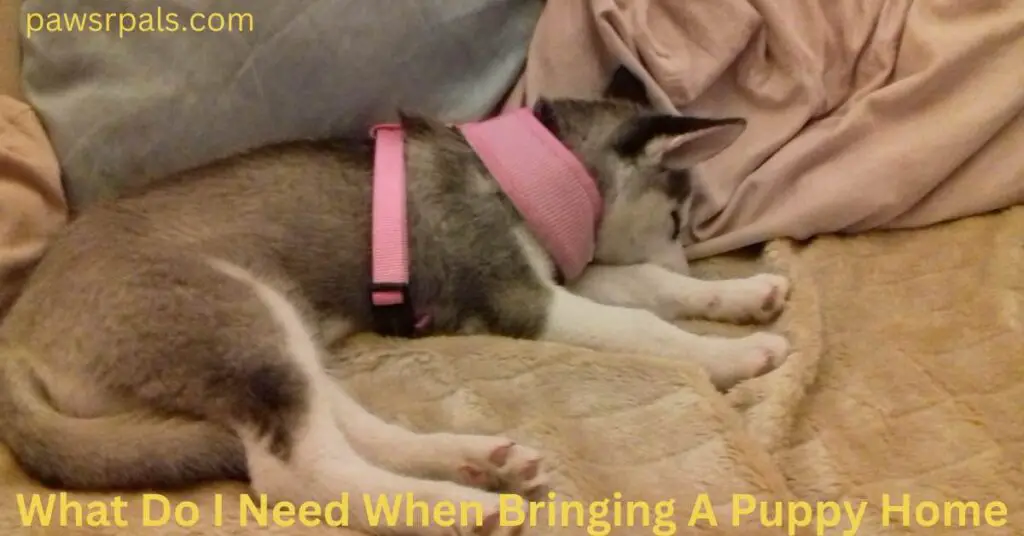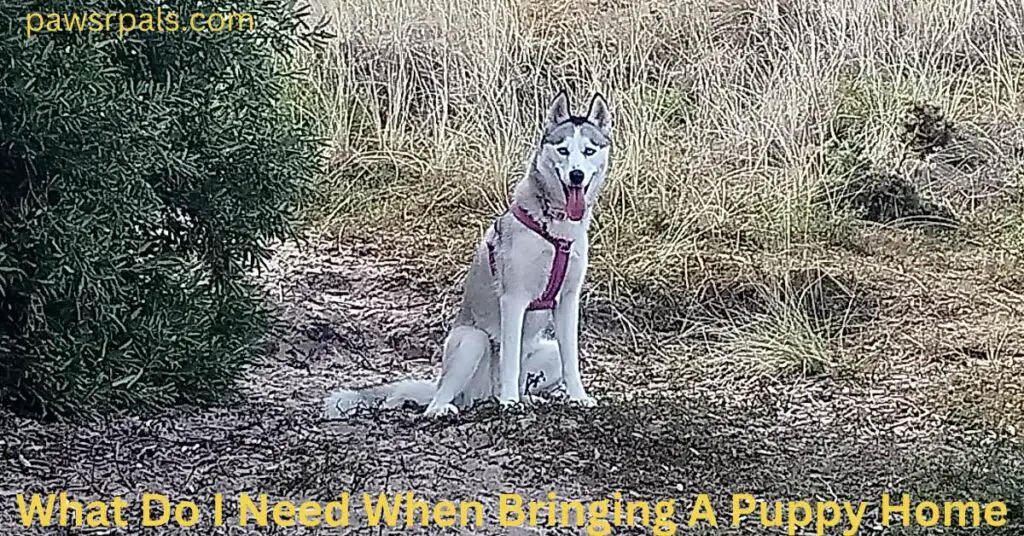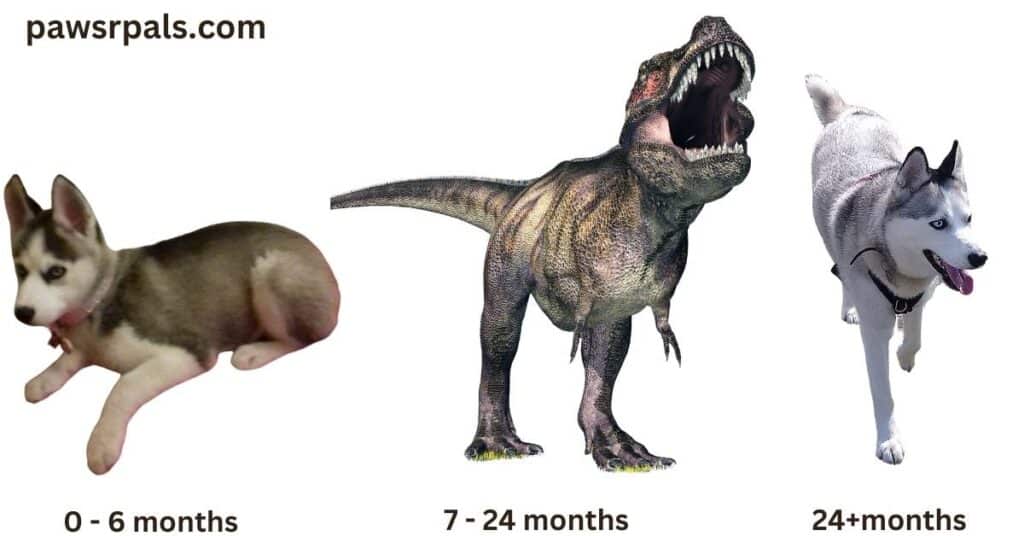Deciding to add a dog to your family is always exciting, but it is a long-term commitment with financial costs involved. Once you have determined that you have the time and resources to commit to a puppy and have decided which breed suits your lifestyle best, and have a puppy in mind, it is time to turn to the crucial basics. So what do you need when you bring home a puppy?
I’ve created a checklist of things your puppy will need to be safe and secure in your home and help get you started.
Find a Vet and Insurance for You Puppy
Your puppy will need regular vaccinations and check-ups, so it’s a good idea to register with a local vet. Speak to people in your local community with dogs, and get recommendations. Once you have chosen a vet, make an appointment. Your vet can give you lots of advice and guidance on your puppy’s needs. Your vet may also be able to recommend registered positive reinforcement trainers in your area.
Pet insurance is a good idea; you may not always have a lump sum available if your dog needs expensive treatment. But, again, reaching out to people with dogs in your local area and getting recommendations are helpful.
Puppy-proof Your Home
Puppies will explore their new environment, and puppies use their mouths to explore, so it’s a good idea to get on your hands and knees, crawl around and look for cables and other things that can be chewed.
You may not want your puppy going into certain areas of your home, so a stairgate is a helpful tool to block areas but still allow your puppy to see you.
If you want to confine your puppy to a specific area in your home, it might be worth considering a doggy playpen. Of course, the playpen you choose will depend on the breed of dog you get. However, Chewy and Amazon have lots to choose from.
If you have a garden or outside area, you will need to check that there are no escape routes or areas that can be easily dug under.
Somewhere for your puppy to rest
Puppies need a lot of rest, it’s tempting to want to be with your new puppy all the time, but your puppy will need time to decompress and rest. Choose a quiet spot where your puppy will not be distracted or disturbed. You can get a crate and put a blanket over it or a dog bed or pillow. If you opt for a dog bed or pillow, it’s a good idea not to spend too much money on it, as puppies like to chew and will probably destroy their first bed.

The important part is that it is an area where your puppy can rest undisturbed. If you have children, they need to learn that the puppy’s rest area is a no-go area for them. Having a quiet spot will also help your puppy quickly adjust to your home by feeling safe, and it will help your puppy to build trust with you.
Puppy Pads for Those Accidents
Puppies will have accidents. Their bodies aren’t developed enough to hold in their toileting, so accidents will occur. I found having some puppy pads in the crate and any area where my dog played practical, making cleaning up the accidents easier. I didn’t rely on the puppy pads for toilet training; they were purely for ease of cleaning up the accidents.
You must be prepared to take your puppy outside for toileting every half hour or so during the day; after drinking or eating, wait for around 20 minutes and take them out.
Collar, Tag, Harness, and Lead for your puppy
Your puppy will need a collar and tag with your contact details. In most areas, this is a legal requirement. A Y-shaped harness is a good option for walking your puppy, as the Y-shaped harness doesn’t put any pressure on the neck or shoulders. There are lots of varieties available online, and for a good fit, your local pet store should be able to help.
We started with the Puppia harness, which was soft, and we wanted our puppy to get used to it. But, again, you don’t want to spend too much money on the first harness as your puppy will grow out of it quickly. So, we moved to a 2-point Y-shaped harness and double-ended lead to help with loose lead walking.

When you choose a lead, you want to ensure that it feels comfortable in your hand and isn’t too heavy for your puppy. You will progress with leads as your puppy grows, especially if you have a medium to large breed dog.
Food and Water Bowls for your puppy
You will want to choose somewhere relatively quiet for your puppy’s food and water bowl. Definitely not in a high-traffic area of your home, as they can be easily kicked over, and you don’t want to fall over your puppy when it is eating or drinking. I went for metal bowls for my dog, as they are sturdy and easy to clean.
I also use a food bowl mat which is excellent for spillages and makes cleaning easier.
Food and Treats for your puppy
It’s a good idea to find out what food your puppy has already been eating and stick to that. If you want to change your puppy’s food, it will have to be done gradually to reduce the risk of tummy upsets. There are lots of different options in your local pet store and online. Always choose a food suitable for your puppy’s age, as puppies need a different supply of nutrients than adult dogs.
There are lots of different treats available for dogs and puppies. You will probably try lots of different treats until you find your dog’s favorite. When it comes to using treats for training, I used a portion of my dog’s daily kibble allowance for everyday training and saved a high-value treat for recall training. You will discover that your puppy places a higher value on certain things, and you can work with this in its training.
Toys and Chew Toys for your puppy
Puppies are mouthy and chew everything they can get into their mouths! Therefore, they must have some appropriate toys and things to chew. You will quickly get into the habit of having something to give your puppy in place of your feet and hands. Please bare in mind that puppy teeth, although sharp, are quite fragile, and you don’t want anything too hard that can damage their teeth.
There are lots of suitable chew toys specifically designed for teething. However, once parts of the chew toy start to deteriorate, it’s time to put it in the bin. Various textured toys are a good way to let your puppy explore and experience the feel of different objects. Kong toys are always a good buy, as they are robust and tend to last.
Puppies are land sharks and instinctively go for moving objects, like hands and feet. So a flirt pole is an excellent toy to help you bond with your puppy and eliminate excess energy while saving your feet and hands. A good rule of thumb is that a puppy only needs 5 minutes of exercise for every month old they are; for example, a 3-month-old puppy will only need 15 minutes of continuous exercise, such as a walk, twice a day. But they will still want to play!

Final Word on Bringing Home a Puppy
Welcoming a puppy into your home is exciting and fun. I hope that his article helped you prepare for your new arrival. Once you have everything you need, you can get to know your new puppy and build a lasting bond with them. Good luck, and enjoy your time with your new furry friend.
I hope you have found this article helpful.
Before you go, you may find these articles interesting:

Leave a Reply